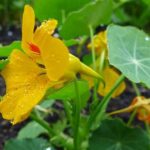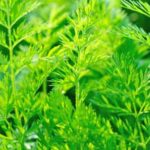“Is dyed wood mulch safe for vegetable gardens?” This question may arise when considering the use of dyed wood mulch as a protective layer in your vegetable garden. Wood mulch serves multiple purposes, such as retaining moisture, suppressing weeds, and improving soil quality. However, the safety of dyed wood mulch in vegetable gardens is a topic of concern for many gardeners.
When it comes to caring for vegetable gardens, the choice of mulch is crucial. In this article, we will delve into the safety aspects of using dyed wood mulch in vegetable gardens and consider alternative options for organic and natural mulching.
Dyed wood mulch is a popular choice for its attractive appearance and ability to enhance the aesthetic appeal of any garden. However, understanding the potential hazards associated with its dyeing process and chemical composition is essential for making an informed decision about its use in vegetable gardens. Let’s explore this further to make sure your garden thrives in a safe environment while using dyed wood mulch.
What Is Dyed Wood Mulch?
Composition of Dyed Wood Mulch
Dyed wood mulch is made from natural wood chips or shreds that have been treated with colorants to achieve a specific hue. These colorants are often made from iron oxide pigments, carbon, and clay, which are deemed non-toxic by the Environmental Protection Agency (EPA). However, some studies have raised concerns about the potential presence of heavy metals in dyed mulch, prompting further investigation into its safety.
Differences From Natural Wood Mulch
The primary distinction between dyed wood mulch and natural wood mulch lies in their appearance. While natural wood mulch retains its original brown or gray color, dyed wood mulch comes in a variety of colors including red, black, and gold. In terms of composition and texture, both types of mulch are generally similar and offer comparable benefits for garden soil health.
Potential Concerns
Despite their visual appeal, some individuals worry about the possible hazards posed by dyed wood mulch. There is apprehension regarding the leaching of chemicals from the dye into the surrounding soil and subsequently into vegetables grown in close proximity.
Additionally, there is concern that certain colorants may contain toxic substances that could be harmful to plants and animals. It is crucial for gardeners to weigh the aesthetic advantages against these potential risks when considering the use of dyed wood mulch in vegetable gardens.
The Dyeing Process
When it comes to dyed wood mulch, the process of dyeing involves adding colorant to natural wood mulch in order to achieve a specific aesthetic appeal. The colorants used for dyeing wood mulch are typically water-based and may contain iron oxide, carbon black, or other materials to achieve the desired color. This process results in vibrant and long-lasting hues that enhance the visual appeal of gardens and landscapes.
Potential Hazards of Dyed Wood Mulch
While dyed wood mulch can greatly enhance the appearance of vegetable gardens, there are potential hazards associated with the dyes used in the coloring process. Some concerns revolve around the chemicals found in certain types of colored wood mulch, which could potentially leach into the soil over time. This could pose a risk to plants and also impact the health of individuals consuming vegetables grown in such environments.
In addition to potential harm to plants and humans, there are also environmental considerations related to dyed wood mulch. Improper disposal of dyed wood mulch can result in these dyes entering water systems and affecting aquatic life. It is important for gardeners to be mindful of these factors when deciding whether or not to use dyed wood mulch in their vegetable gardens.
Benefits of Using Dyed Wood Mulch in Vegetable Gardens
Wood mulch is a popular choice for vegetable gardens, providing numerous benefits such as moisture retention, weed suppression, and soil insulation. Among the various types of wood mulch available, dyed wood mulch has gained attention for its aesthetic appeal and enhanced weed control properties. Dyed wood mulch is created by adding colored dyes to natural wood mulch, resulting in vibrant hues that can complement the overall appearance of a garden space.
The dyeing process involves using water-based or iron oxide-based dyes, which are generally considered safe for plants and the environment. However, concerns have been raised about the potential hazards of the dye leaching into the soil and posing risks to vegetation in vegetable gardens. It is essential for gardeners to weigh these considerations when deciding whether to use dyed wood mulch in their vegetable plots.
Despite these concerns, many home gardeners appreciate the visual impact that dyed wood mulch can bring to their vegetable gardens. The various color options available allow for customization of garden aesthetics, creating a visually appealing backdrop for growing vegetables. Additionally, dyed wood mulch has been found to be effective in suppressing weed growth, reducing maintenance efforts in vegetable gardens.
| Pros of Dyed Wood Mulch | Cons of Dyed Wood Mulch |
|---|---|
| Enhanced Aesthetic Appeal | Potential Hazard of Dye Leaching into Soil |
| Weed Control Properties | Risk of Chemical Harm to Plants |
The Potential Dangers of Dyed Wood Mulch in Vegetable Gardens
Dyed wood mulch is a popular choice for many gardeners due to its aesthetic appeal and weed control properties. However, there are valid concerns about the potential dangers of using dyed wood mulch in vegetable gardens.
One of the main worries is the possibility of chemicals leaching into the soil and potentially harming plants. When considering the use of dyed wood mulch in vegetable gardens, it’s important to be aware of these potential risks and take steps to minimize them.
One potential danger of dyed wood mulch is the presence of harmful chemicals in the dye itself. The dyeing process often involves the use of synthetic chemicals that may contain toxins which could leach into the soil over time. This can be particularly concerning when growing edible crops in vegetable gardens, as there is a risk of these chemicals being absorbed by the plants and ultimately consumed by humans.
To address these concerns, it’s essential for gardeners to carefully consider the type of dye used in wood mulch and opt for products that are labeled as non-toxic and safe for use around edible plants. Additionally, choosing natural or organic alternatives to dyed wood mulch can help minimize the risk of chemical contamination in vegetable gardens.
Organic and Natural Alternatives to Dyed Wood Mulch
When considering the best mulch for a vegetable garden, there are plenty of organic and natural alternatives to dyed wood mulch. While dyed wood mulch can provide aesthetic appeal and weed control properties, many gardeners are concerned about potential hazards such as chemicals leaching into the soil and harmful effects on plants. As a result, it is important to explore safer options that can still offer the benefits of mulching without the potential risks associated with dyed wood mulch.
One popular natural alternative to dyed wood mulch is straw. Straw serves as an effective mulch for vegetable gardens by helping to retain moisture in the soil, reducing erosion, and suppressing weed growth. Additionally, straw is easily decomposable, adding organic matter to the soil as it breaks down. Another benefit of using straw is its affordability and availability in many gardening supply stores or farms.
Another organic option for mulching vegetable gardens is grass clippings. Grass clippings serve as an excellent source of nitrogen when used as a mulch, providing essential nutrients for vegetable plants as they decompose. They also help retain soil moisture and suppress weeds. However, it is important to use grass clippings from lawns that have not been treated with herbicides or pesticides to avoid any potential harm to vegetable plants.
A third natural alternative is shredded leaves, which are a free resource during the autumn months when trees shed their foliage. Shredded leaves make an excellent mulch for vegetable gardens by improving soil structure, retaining moisture, and providing insulation for plant roots during extreme temperatures. By utilizing these organic and natural alternatives, gardeners can create a safe and healthy environment for their vegetable plants while still enjoying the benefits of mulching.
| Natural Alternative | Benefits |
|---|---|
| Straw | Retains moisture in the soil, reduces erosion, suppresses weed growth |
| Grass Clippings | Source of nitrogen, retains moisture in the soil, suppresses weeds |
| Shredded Leaves | Improves soil structure, retains moisture in the soil, provides insulation for plant roots |
Tips for Safely Using Dyed Wood Mulch in Vegetable Gardens
When using dyed wood mulch in vegetable gardens, it is important to take certain precautions to minimize potential risks to the soil and plants. Here are some tips for safely using dyed wood mulch in your vegetable garden:
- Choose non-toxic dyes: When purchasing dyed wood mulch, opt for products that use non-toxic or natural dyes. Avoid mulches that contain potentially harmful chemicals or synthetic dyes that may leach into the soil.
- Limit direct contact with edible parts of plants: To reduce the risk of contamination, avoid placing dyed wood mulch directly on the soil around vegetable plants. Instead, create a barrier between the mulch and the edible parts of the plants, such as by using a layer of natural, untreated mulch or straw underneath the dyed wood mulch.
- Monitor plant health: Keep a close eye on your vegetable plants for any signs of stress or damage after applying dyed wood mulch. If you notice any issues, such as wilting or yellowing leaves, consider removing the dyed mulch and replacing it with an organic alternative.
By following these guidelines, you can help minimize the potential risks associated with using dyed wood mulch in your vegetable garden while still enjoying its aesthetic benefits and weed control properties. It’s also a good idea to regularly test your soil’s pH levels and monitor for any signs of chemical buildup or toxicity resulting from the use of dyed wood mulch.
Overall, taking these precautions can help ensure that your vegetable garden thrives while using dyed wood mulch as a landscaping option.
Conclusion
In conclusion, while dyed wood mulch can offer aesthetic appeal and weed control properties, it also presents potential dangers for vegetable gardens. The dyeing process may introduce harmful chemicals into the soil, posing a risk to plant health and food safety. As such, it is crucial for gardeners to weigh the benefits against the potential hazards before using dyed wood mulch in their vegetable gardens.
For those concerned about the potential dangers of dyed wood mulch, there are organic and natural alternatives that can provide similar benefits without the risks. Materials such as untreated wood chips, straw, or compost can effectively suppress weeds and retain moisture in the soil without introducing potentially harmful substances. These alternatives not only promote a safer environment for plants but also contribute to sustainable gardening practices.
Ultimately, if choosing to use dyed wood mulch in vegetable gardens, it is important to do so cautiously and responsibly. Gardeners should take measures to minimize the risks by selecting reputable suppliers that use non-toxic dyes and applying the mulch at a safe distance from plant roots. By staying informed and taking appropriate precautions, gardeners can enjoy the benefits of mulching while safeguarding the health of their vegetable gardens.
Frequently Asked Questions
Is It OK to Put Dyed Mulch in a Vegetable Garden?
It is not recommended to put dyed mulch in a vegetable garden. The dyes used in colored mulches may contain chemicals that can potentially leach into the soil and be absorbed by the vegetables. This can be harmful to both the plants and anyone consuming the vegetables.
What Are the Cons of Dyed Mulch?
The cons of dyed mulch include the potential risk of chemical leaching into the soil, which can harm the plants and affect their growth. Additionally, some dyes used in colored mulches may contain heavy metals or other toxic substances that can pose environmental hazards.
What Color Mulch Is Best for Vegetable Garden?
Natural-colored mulch, such as black, brown, or dark hardwood, is generally considered best for a vegetable garden. These natural colors do not contain potentially harmful dyes and are less likely to have negative effects on the soil or the plants. Additionally, natural-colored mulch helps retain moisture and regulate soil temperature, which are beneficial for vegetable garden growth.

If you’re looking to get into vegetable gardening, or are just looking for some tips on how to make your current garden better, then you’ve come to the right place! My name is Ethel and I have been gardening for years. In this blog, I’m going to share with you some of my best tips on how to create a successful vegetable garden.





